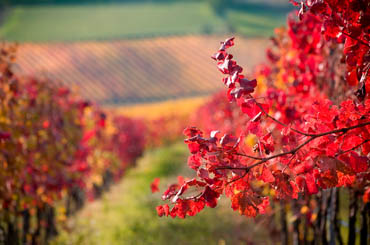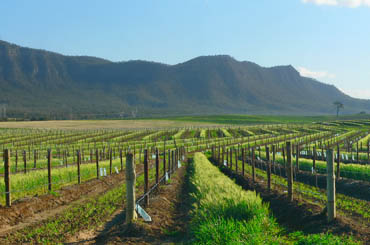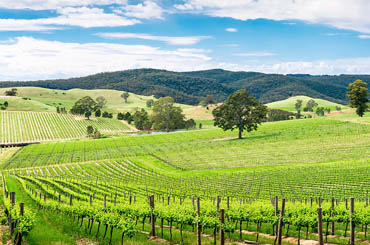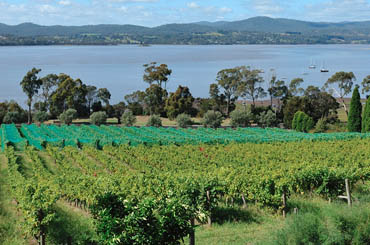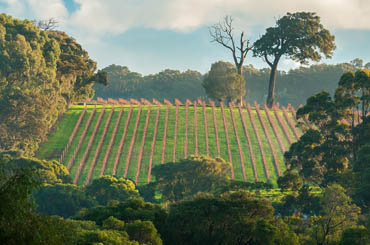2017 Vintage Snapshot: Victoria
Yarra Valley
The Yarra Valley arguably had the best vintage since 1992, and before that ’88. It was marked by good rainfall and cool to mild temperatures that continued into summer. Rain and wind at flowering meant the Lower Yarra’s yields were down somewhat. The Upper Yarra had good, but not excessive, yields and the warm summer that finally arrived had no major heat spikes. All varieties came in later than any vintage since 2002 and at an unhurried pace. Chardonnay and pinot noir have just about every vigneron rubbing their hands with glee.Mornington Peninsula
The Mornington Peninsula was a carbon copy of the Yarra Valley, with good bunch numbers, but hen and chicken berries reduced yields. Flowering, and ultimately vintage, was two to three weeks later than 2016. The cool weather meant excellent retention of natural acidity, leading some to rate chardonnay and pinot gris as the best ever, while pinot noir has revealed great balance and elegance.Geelong
Geelong had excellent winter and spring rains, resulting in a late but vigorous start to the season. Yields were variable depending on nutrient status. Pinot noir and shiraz yields in particular had to be carefully managed.Sunbury and the Macedon Ranges
Sunbury and the Macedon Ranges winemakers are ecstatic. One respondent rated the ripening conditions as the best this century, another went back further to the 1990s. Overall, low to moderate yields will be very high quality.Bendigo
Bendigo had a similar tale, with excellent late winter and spring rains filling the dams and subsoil alike. Benign, albeit cool, weather conditions saw very good fruit set. Lovely, strongly varietal-but-elegant cabernet sauvignon and merlot are the stars. Shiraz and cabernet are also doing well.
Heathcote
Heathcote had average winter rain and a drier than normal spring until 80mm of rain in January set the vineyards up beautifully. Harvest commenced two to three weeks later than 2016, with generally moderate yields. Shiraz is the standout.The Grampians
The Grampians had the best vintage for at least a decade, with perfect weather from start to finish; summer was particularly mild and dry, with very few heat spikes. Riesling is outstanding. Shiraz is also textbook stuff, with spice and elegance in abundance.Henty
Henty (naturally) had a wet start, September’s 145mm smashing the all-time record. The weather remained cool. The rain stopped in November, resulting in excellent fruit set. Come the start of harvest the canopies were utterly perfect, with riesling the first to benefit.Pyrenees
The heavy winter rainfall in the Pyrenees was celebrated by all. The weather through the growing season was cooler than normal, resulting in a drawn out harvest with much longer hang time than encountered for many, many years. High quality shiraz and cabernet sauvignon are expected by almost all.
Beechworth
Beechworth followed the Victorian rain and temperature pattern, with one major exception: picking wasn’t late. Giaconda says that all varieties are of high to very high quality, but chardonnay is an absolute standout (watch for its release).Nagambie Lakes
Nagambie Lakes had average winter rainfall (for the first time in years), then spring arrived with seemingly endless rain. Summer opened warm and wet, with visions of a repeat of 2011, but the rain stopped in mid-February, and March was a joy with three balmy weeks of low, 30 ̊C temperatures and warm nights accelerating ripening. The result: distinct varietal flavours in the white wines, and reds with bright fruit and elegance.Strathbogie Ranges
The Strathbogie Ranges had a year described succinctly as ‘odd’: a wet winter and spring; then a cool opening to summer with a mild, dry February; then three weeks in March with days around 30 ̊C. This played hell with canopies. Overall, quality is average, high yield another factor.Upper Goulburn
The Upper Goulburn had drier than average winter and spring, but mid- to late-summer rains were perfect. Summer and autumn brought cool to warm conditions with no heat spikes – the complete opposite of 2015 and ’16. It was a very good year for white wines, but average for reds.Alpine Valleys and King Valley
The Alpine Valleys and King Valley had ample spring rainfall and benign weather during flowering, creating above-average yields and the latest start to vintage for many years. Acid retention was excellent and flavour development was ahead of baumes. Outstanding wines were produced from chardonnay, friulano, tempranillo, shiraz, sangiovese, prosecco and pinot grigio.Glenrowan
Glenrowan ran its own race, with an early start to vintage and a compressed intake across the region, bringing back memories of 2016. Nonetheless, quality is high. The standout varieties are muscadelle, shiraz and durif.Rutherglen
Rutherglen’s yields were moderate to high, producing good quality shiraz, cabernet sauvignon and chardonnay.




